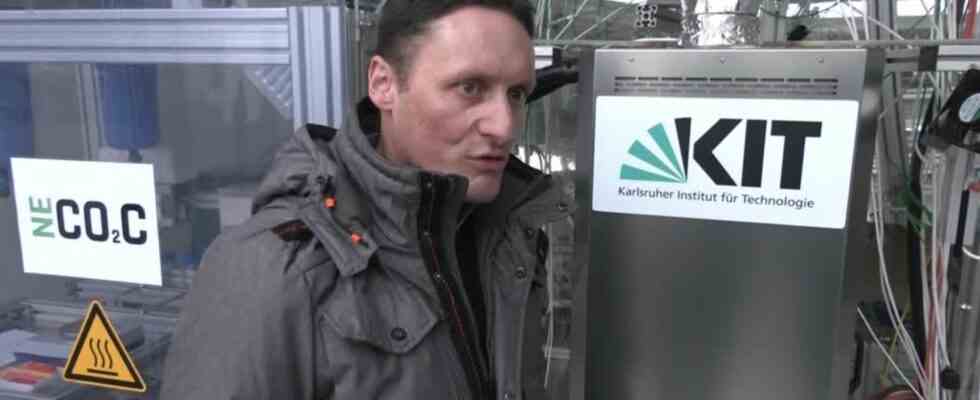STORY: CO2 – a concern, feared as a climate-damaging greenhouse gas. At the Karlsruhe Institute of Technology (KIT), researchers are investigating how unwanted carbon dioxide from the atmosphere could be turned into something desirable: pure carbon. NECOC – short for “Negative Carbon Dioxide to Carbon” is the name of the procedure and it runs over a three-stage process. First, CO2 is separated from the ambient air drawn in. During the subsequent methanation, it is broken down into its components carbon and oxygen, which then form new bonds with hydrogen. The result is methane and water Benjamin Dietrich, Head of the Institute for Thermal Process Engineering at KIT “Here we see the core of the NECOC technology, the last step, the pyrolysis technology. Methane is added to the pyrolysis reactor from below. The pyrolysis reactor is one with liquid tin filled glass column. In the glass column, which is heated, the methane breaks down into carbon and hydrogen. The carbon floats up here and can then be discharged at the end.” Pure carbon is otherwise usually obtained from fossil sources such as oil and coal and is valuable in many industrial products, from building materials and paintings to the manufacture of batteries and medical technology. The process in Karlsruhe has been running since last December, but only on a pilot scale. On average, 0.5 kilograms of carbon are produced here every day. The energy and hydrogen required for this are obtained with the help of renewable energies. Technologies that can be used to remove CO2 from the atmosphere are increasingly coming into focus when trying to achieve global climate goals. According to a study published in January by the University of Oxford, about two billion tons of carbon dioxide are removed from the atmosphere every year, mainly by plants or habitats such as peatlands. According to the report, technical solutions account for only 0.1 percent. In order to limit global warming to a maximum of two degrees Celsius compared to pre-industrial times, processes would have to be significantly expanded by 2050 – by a factor of around 1,300.

